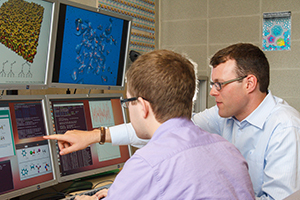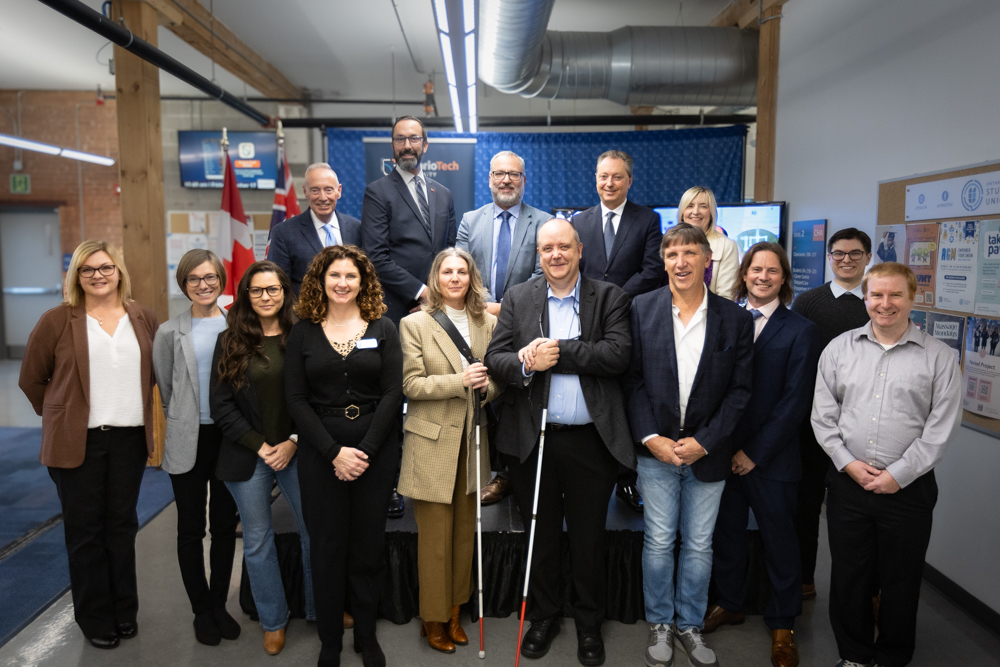UOIT Faculty of Science researcher awarded $633,000 in computer time
January 22, 2014

When it comes to predicting the electronic, structural and dynamic properties of new chemical structures and molecules, researchers are always looking to secure all of the resources available to get the job done.
Dr. Isaac Tamblyn, Assistant Professor of Physics in the Faculty of Science at the University of Ontario Institute of Technology (UOIT), is breaking new ground in the science of renewable energy. While the importance of this task can be understood by everyone, the particles Dr. Tamblyn works with are so incredibly tiny, they can’t be detected by the human eye. To do that, he’s starting at the nanoscale, which means understanding and manipulating matter at the length scale of just a billionth of a metre.
“That’s about the size of it,” jokes Dr. Tamblyn, who heads up UOIT’s Computational Laboratory for Energy and Nanoscience (CLEAN). “Our research involves controlling molecular processes such as water splitting. We use computer simulations to model how water will behave next to different surfaces and in the presence of electrical currents. To accomplish this, our research team needs access to very large computers.”
Members of CLEAN are going to get that opportunity, thanks to a new award from Compute Canada/Calcul Canada in the form of more than 6.3 million hours of processor time. The Compute Canada award to UOIT has a market value of more than $633,000.
“By modelling how water behaves next to a metal surface, we can better predict what will and will not be an effective catalyst for driving reactions involved in the production of hydrogen,” said Dr. Tamblyn. “Materials such as platinum work very well, but there simply is not enough of it on Earth to be used at an industrial scale. Finding the right catalyst will have a huge impact on our energy future. We’re using computers to help with that search.”
Canada’s national platform of High Performance Computing (HPC) resources has announced grants of more than $134 million worth of state-of-the-art computing, storage and support resources allocated to 271 leading-edge Canadian research projects across the country, including Dr. Tamblyn’s research at UOIT.
“The value of these grants goes far beyond their financial worth," said Dugan O'Neil, Chief Scientific Officer, Compute Canada. "These incredibly powerful computing tools and our network of experts are helping Canadian researchers develop and improve products, inform public policies, contribute to sustainable job creation and make discoveries that help us better understand the world around us."



